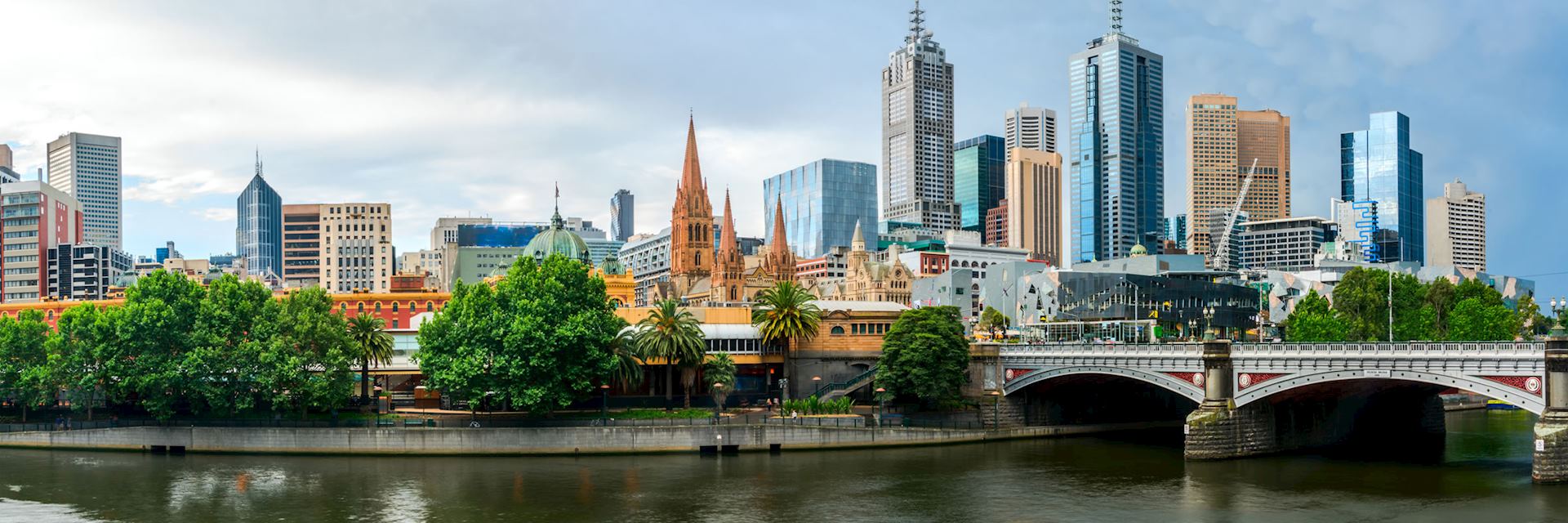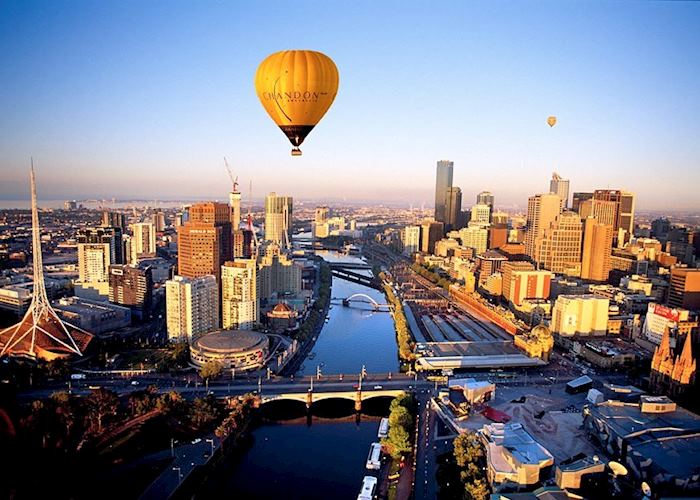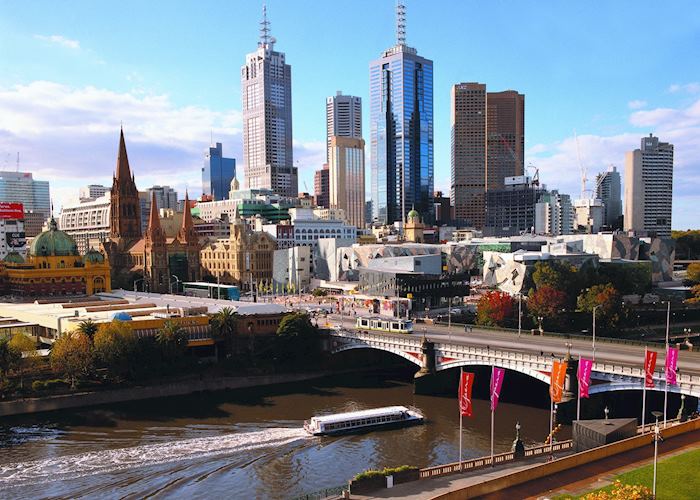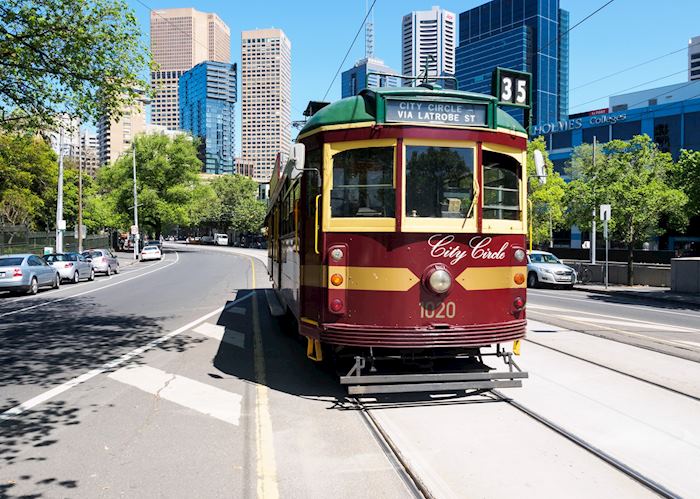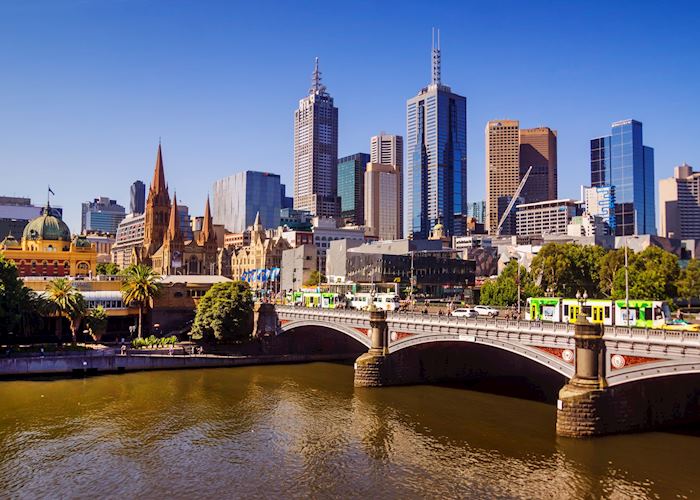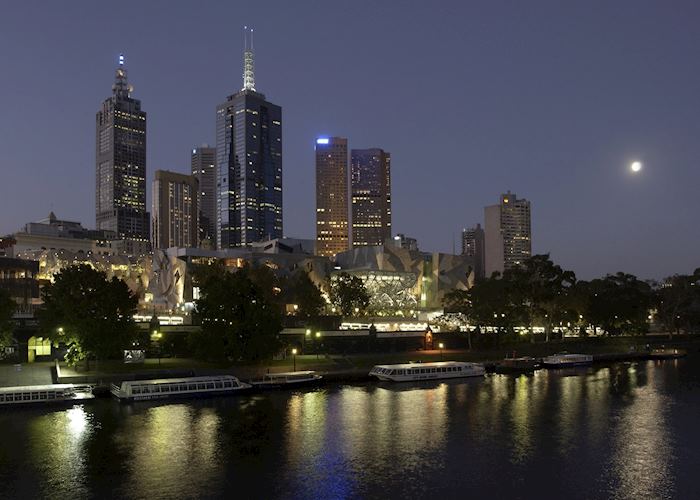Melbourne’s gloriously schizophrenic. It has a storied elegance, with Georgian municipal buildings that speak of the city’s 19th-century gold-rush wealth. It’s energetically modern and thrusting, with a balanced grid of streets and world-class sports venues such as ‘The G’, Melbourne Cricket Ground. Yet beneath this semblance of orderliness, rebellion simmers. For Australia’s ‘City by the Bay’ is nothing less than an old curiosity shop of proudly individualistic precincts, shaped by migrant communities and subcultures. In the same day, you could take in the beach (and cake shops) of St Kilda, the splashy retro murals of Fitzroy, and the pho eateries of Richmond’s Little Saigon — and even then, you’d only just be warming up.
Australia specialist JenniferI love the buzz of Melbourne, especially when there’s an Aussie rules game on from March to September. It’s a multi-layered city that you can spend months and even years exploring, forever uncovering a new piece of edgy street art, or visiting a new suburb or beach.
Things to see and do in Melbourne
The laneways and arcades
Melbourne can be a secretive city: much of it is hidden from view down a maze of lanes in the CBD (central business district). Originally designed to provide service access to buildings, the lanes were opened up in the 1990s, gentrified (some were former Victorian slums) and made pedestrian-only zones.
Concomitant to the laneways is a handful of Belle-Époque-style arcades, with mosaic tiling and high glass ceilings reminiscent of Paris’s passages couverts. High-end boutiques and tea rooms (plus the odd tarot reader) are found in the arcades. In the laneways, alfresco cafés, independent bookshops, sushi bars, standing-room-only clubs (and much more) jostle alongside each other against a backdrop of kaleidoscopic, often political graffiti and street art.
St Kilda’s beach and boardwalk
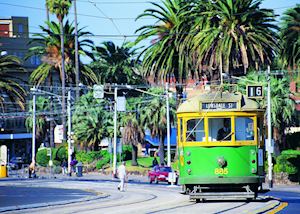 A short tram ride south of the city brings you to the beachfront suburb of St Kilda’s. At night, its streets become busy with barflies, but by day the scene is quite different. Locals bask quietly on sidewalk cafés, tucking into patisserie-style cakes from Acland Street’s bakeries.
A short tram ride south of the city brings you to the beachfront suburb of St Kilda’s. At night, its streets become busy with barflies, but by day the scene is quite different. Locals bask quietly on sidewalk cafés, tucking into patisserie-style cakes from Acland Street’s bakeries.
The sea — too soft for surfers — might be speckled with sea kayakers, windsurfers and swimmers, while roller skaters glide up and down the esplanade. On Sundays, this walkway is overtaken by an arts and crafts market.
Strolling to the end of the breeze-swept pier and boardwalk, you can look across to the white beacon of St Kilda’s lighthouse. Stay for sunset, and you’ll see penguins waddling among the rocks of the pier’s breakwater.
Brunswick Street in Fitzroy
When you walk down this northern suburb street you’ll feel your eyes pulled in a million directions, from the brightly hued street art and resident buskers to the cheerful cacophony of signage and sometimes ramshackle shopfront façades.
The place is a showcase for world cuisine, with restaurants serving all kinds of fare from tapas to modern French and Asian, as well as vegetarian-only. You’ll see locals tripping along its length, carrying wine bottles — a lot of the restaurants here are ‘bring your own’. Apart from dining establishments and bars, you’ll also find galleries, retro-clothing stores, cafés whose main occupants are writers and artists, and LGBT bookshops.
Federation Square
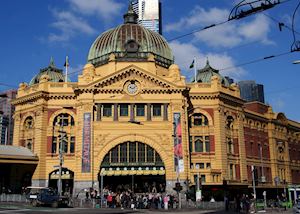 Locals call it the ‘meeting point’. This U-shaped public square, Melbourne’s first, spreads from the CBD to the muddy Yarra River. It’s fronted by both the city’s cathedral and Flinders Street Station. A wall of clocks displaying different time zones frames the entrance to this Edwardian-era building, which spawned the phrase ‘meet me under the clocks’.
Locals call it the ‘meeting point’. This U-shaped public square, Melbourne’s first, spreads from the CBD to the muddy Yarra River. It’s fronted by both the city’s cathedral and Flinders Street Station. A wall of clocks displaying different time zones frames the entrance to this Edwardian-era building, which spawned the phrase ‘meet me under the clocks’.
It’s a space that’s at once heavily secular and yet spiritual — the sandstone paving tiles in the central scalloped piazza were designed to evoke the Outback and Victoria’s Aboriginal heritage. It’s also traditionally the place where Melbourners come together to watch events broadcast on the square’s big screen.
Amid the cafés, bars and benches stand the Ian Potter Centre and the Australian Centre for the Moving Image. Their angular, twisty façades made of glass and zinc hexagons, and slate-hued and pink pinwheel tiling, demand your attention. Inside, you’ll find indigenous and non-indigenous Australian art and avant-garde installations.
Phillip Island
This grassy island surrounded by both basaltic and pink granite outcrops lies an hour and a half away from Melbourne. It attracts surfers who are drawn to the strong rips and currents of Woolamai Beach, but its real highlight is its wildlife.
Every evening, a colony of little penguins — the world’s smallest penguin — make their way up through the spiky grass of Summerland Beach to their burrows. It’s possible to observe the ritual with a wildlife guide from a sheltered, unlit spot on the beach. Elsewhere, you can see fur seals lolling over rocks, and spot sleeping koalas from treetop boardwalks.
Yarra Valley
An hour’s drive away from Melbourne is one of Australia’s premier wine-producing areas. The Yarra Valley is a gently hilly landscape of vineyards, orchards and flower farms, sheltered by the Dandenong Ranges. These low-lying mountain ridges are covered in temperate rainforest and fern gullies.
You can take wine-tasting tours of many of the boutique and larger wineries here — we like Yering Farm, and Rochford, plus Domaine Chandon for champagne. Most wineries will serve lunch and food platters.
Yarra is also home to artists and a forest interspersed with woodcarvings of Aboriginal spirit figures.
Great Ocean Road
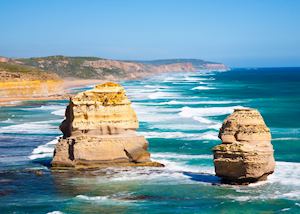 The 200 km (125 mile) Great Ocean Road warrants several days’ exploration, but it’s possible to get a taste of it on a day visit from Melbourne. The scenery dazzles whichever way you look. In the Southern Ocean, you have the limestone sea stacks of the Twelve Apostles, while inland the road skirts eucalyptus forest and fern gullies.
The 200 km (125 mile) Great Ocean Road warrants several days’ exploration, but it’s possible to get a taste of it on a day visit from Melbourne. The scenery dazzles whichever way you look. In the Southern Ocean, you have the limestone sea stacks of the Twelve Apostles, while inland the road skirts eucalyptus forest and fern gullies.
Guided day trips from Melbourne often include walks on the beaches opposite the sea stacks, and a visit to the Great Ocean Ecolodge. At this property, you can venture into the bush with rangers to learn about koala conservation projects, and watch the creatures snoozing in the trees above your head.
Best time to visit Melbourne
Melbourne’s weather can be very changeable but, in general, the summer months (December to February) offer the most pleasant climate.
Festivals, events and seasonal reasons to visit Melbourne
Melbourne’s a city in love with sport, so it’s at its busiest (but also its liveliest) during major sporting fixtures. These include the Melbourne Cup (Australia’s most prestigious horse race), which takes place annually in November, the Australian Open, and the Australian Grand Prix (dates vary).
who's been there
Start planning your tailor-made trip to Melbourne by contacting one of our Australia specialists
- 617-223-4575
- Make an inquiry

